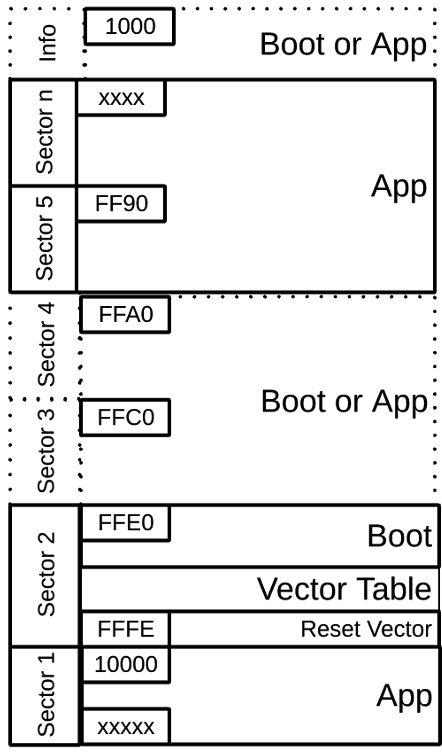SLAA721E October 2016 – March 2020 MSP430FR5969 , MSP430FR5969-SP , MSP430FR5994 , MSP430FR6989
- Trademarks
- 1Introduction
- 2Implementation
- 3Customization of MSP430FRBoot
- 4Building MSPBoot
- 5Demo Using FRAM LaunchPad Development Kit as Host
- 6Porting the target side example projects to other MSP430FR devices
- 7References
- 8Revision History
2.2.2 Memory Assignment
MSPBoot cannot erase or reprogram the bootloader area. This limitation provides a more secure implementation, because the bootloader is always accessible, and the MSP430 MCU can be recovered by forcing bootloader mode.
The reset vector is an integral part of the bootloader, because it forces the MSP430 MCU to always jump to the bootloader entry sequence and, thus, should not be erased. Because the reset vector resides in the top of 16-bit FRAM space (0xFFFE), the bootloader code is placed in the contiguous locations (see Figure 2-5).
 Figure 2-5 Memory Assignment
Figure 2-5 Memory AssignmentThe interrupt vector table is also in the protected boot area. Because the value of the interrupt tables is expected to change based on the application, this means that special considerations must be followed to allow for application interrupts. Additional 20-bit space is available for the application (0x10000 and above).